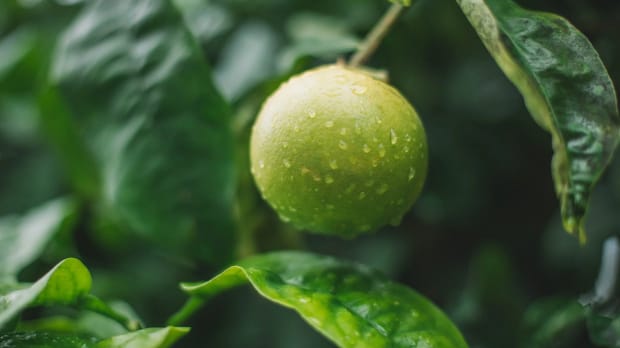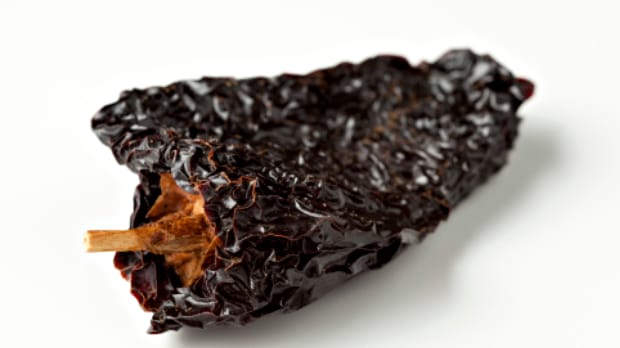What is Key Lime?
Key lime, pronounced [Keɪ Laɪm], is a small citrus fruit that has a distinctive tart taste and is typically the size of a golf ball. It is usually yellow-green in color and is native to Southern Florida, as well as the Keys and other tropical regions in the Caribbean. The juice extracted from key limes is yellow in color and is even more tart than the juice of regular limes. These tangy citrus fruits are typically used in the making of one of Florida’s most popular desserts, Key Lime Pie. This particular type of fruit adds a unique and tangy flavor to any dish it is used in. So if you ever come across a recipe that calls for key lime, don’t hesitate to try it out!
What are the Nutritional Benefits?
Attention all foodies and health enthusiasts! Are you looking for a food that’s both tangy and nutritious? Look no further than the key lime! This small, green citrus fruit is a powerhouse of nutrition. For starters, it’s low in calories yet high in vitamin C – just one lime contains about a third of your daily recommended intake! Vitamin C is essential for supporting a healthy immune system and promoting healthy skin.
But that’s not all. Key limes also contain fiber, which aids digestion and helps keep you feeling full for longer. Fiber has been shown to lower cholesterol levels and reduce the risk of heart disease.

In addition to fiber, key limes are also a good source of potassium. This mineral helps regulate your blood pressure and can reduce the risk of stroke and heart disease. And let’s not forget about the flavor! These tiny citrus fruits add a deliciously tart kick to salads, drinks, and desserts. So go ahead and add some juice and zest to your next recipe. Your taste buds (and your body) will thank you!
Types Available
Are you a fan of the tangy, zesty flavor of lime? Let’s compare key limes to other limes you might find at the store. The most common type of lime you’ll find at the store, usually called limes, are actually Persian limes also called Tahitian limes. The next most common is the subject of today’s article, the key lime. Another type that’s harder to get ahold of are calamansi limes.

Persian limes are the most easy to find in the United States. In fact, they’re so common, they’re usually just called limes at the grocery store. Persian limes are larger than key limes, have less seeds (usually seedless) and more juice. The Persian limes have a thicker skin, which helps them stay fresh longer. Typically sold when the skin is bright green (shall we say lime green), these limes are actually ripe when the skin is yellow. Persian limes have a distinct acidic flavor, but are not very aromatic compared to key limes.
Key limes are most known for their aromatic qualities, meaning they smell great. The aroma is very citrusy and can also be described as floral and slightly herbal. This sweet aroma is what makes the key lime a favorite in desserts and drinks. Key limes are not as easy to find in the grocery store. When I do find them, they are often sold in a bundle, often a one pound bag. The flavor of key limes is tart but usually not as acidic as the Persian version. Key limes are smaller, have more seeds, and thinner skins.
Another type of lime you might find is the calamansi lime. It’s actually smaller than the key lime, if you can believe it, which is why these varieties are sometimes confused. Unlike the other two limes, the calamansi has yellow flesh on the inside instead of light green. It is sweeter and less acidic than the key lime too.
What are the Best Uses?
Are you ever stumped on what to do with a basket of key limes? Look no further! These small but mighty fruits can add a burst of flavor and nutrition to any recipe. Here are some of the best uses for key limes:
Key lime pie – This classic dessert is a must-try! The creamy, tangy filling pairs perfectly with a graham cracker crust and a dollop of whipped cream on top.
Salad dressing – Skip the store-bought dressings and make your own with freshly squeezed juice from key limes. Mix with olive oil, honey, and Dijon mustard for a bright and zesty dressing.
Marinade – Key lime juice is a great base for marinades, especially for seafood dishes. Add some garlic, ginger, and soy sauce for a delicious Asian-inspired marinade.
Guacamole – Give your guac a twist by adding some key lime juice and cilantro. It’ll elevate your avocado game!
Beverages – The tartness of key limes makes for a refreshing addition to drinks. Try adding to sparkling water, lemonade, or even a margarita for a tropical twist.
So next time you have a bag of key limes, don’t hesitate to get creative in the kitchen. Your taste buds (and health) will thank you!
How do You Store Key Limes?
If you have recently purchased some key limes, you may want to keep them fresh and preserved as long as possible. After all, key limes are not only delicious, but they are also a healthy source of vitamins and minerals. Watch out for bruised limes as these will not keep as long. Fortunately, storing key limes is easy and straightforward. Here are some simple tips you can follow:
Keep them dry: Key limes do not like moisture, so it is essential to keep them dry. After purchasing, make sure to dry them thoroughly with a towel or blotting paper.
Store in a refrigerator: Key limes last longer when they are stored in a refrigerator. Place them in the crisper drawer of your fridge to keep them fresh for up to 1-2 weeks.
Use an airtight container: To maintain the freshness and flavor of your key limes, store them in an airtight container or sealable bag. They will last longer if the skin doesn’t dry out.
By following these simple tips, you can keep your key limes fresh and tasty for a long time, ensuring that you always have a healthy and delicious ingredient on hand for your culinary creations.
How to Prepare a Key Lime
Hey there! Are you a fan of all things tart and tangy? Then you’re going to love using key lime in your recipes! Preparing them is really easy; it’s just like other citrus fruit. First things first, make sure you have fresh key limes. You can find them at most grocery stores, or even grow them in your own backyard if you’re feeling adventurous. Once you have your limes, wash them thoroughly to remove any dirt or debris.
After washing the limes, check your recipe to see if you need lime zest. If you do, it’s way easier to zest the limes before juicing them. My favorite tool for zesting citrus is a microplane. It works great for a lot of other jobs too, so it’s a nice multi use tool. There are other specialty zesters that work too, so choose the tool that works best for you.
Then comes the fun part – juicing the key limes! There are a few ways to do this, but we recommend using a citrus juicer or a handheld reamer. This will help keep the seeds out of your recipe. Cut the limes in half and then place them, cut side down, on the juicer/reamer. Apply pressure and twist the fruit back and forth until all the juice is extracted. If you’re juicing a large quantity of limes, consider using an electric juicer. Once you have your juice, you can use it in a variety of recipes – including that delicious Key Lime pie we mentioned earlier.
When are Key Limes in Season?
Are you curious to know which season is best for the tastiest and freshest Key Limes? Well, let me tell you, this citrus fruit is in full swing during the summer months! As the temperatures rise, Key Limes flourish and offer their tangy sweetness to those who eagerly await their arrival. In fact, many farmers’ markets and grocery stores stock up on Key Limes during the summer season because of their high demand and juicy flavor. Not to mention, Key Limes are a great addition to many summer recipes, such as refreshing drinks, pies, and marinades for grilled meats.
It’s important to note that Key Limes can also be found during the fall and winter months, but they may not be as plentiful or as flavorful due to their off-season status. So, if you’re craving the zesty taste of Key Limes, make sure to snatch them up during the summer months for the best quality and flavor.
In conclusion, for those who love the tart and sweet taste of Key Limes, make sure to grab them during summer when they are at their peak of freshness and flavor. Trust me, your taste buds will thank you!
Improve Your Health With Seasonal Eating
What to Serve Key Limes With?
- Grilled Fish
- Avocado Salsa
- Coconut Rice
- Mango Slices
- Shrimp Ceviche
- Fried Plantains
- Black Beans
- Sweet Potato Fries
- Corn Tortillas
- Greek Yogurt
What Traditional Cuisines Use Key Limes?
Key limes are a traditional ingredient in many cuisines around the world, including Latin American, Caribbean, and Southeast Asian cuisines. Key limes are used in dishes such as ceviche, key lime pie, margaritas, and mojitos. They are also commonly used in marinades and sauces for fish, poultry, and pork.
Tasty Recipes
- Key Lime Pie Bars
- Key Lime-Coconut Pie
- Grilled Key Lime Chicken
- Key Lime Pie Ice Cream
- Fish With Key Lime Butter Sauce
One of My Favorite Recipes is Baked Shrimp Marinade: Lime & Clementine
Key Takeaways
- Key limes are smaller, more tart, and more fragrant than regular limes.
- Use key limes to make dishes such as key lime pie, key lime mousse, and key lime margaritas.
- When juicing key limes, roll them between your hands to break down the fibers and release more juice.
- When using key limes in baking, add a little extra acidity to balance out the sweetness of the recipe.
- Combine key lime juice with olive oil, garlic, and herbs to make a flavorful marinade for fish or poultry.
- Use key lime zest in dressings and sauces to add a bright flavor to dishes.
- Add a few drops of key lime juice to your favorite smoothies for a refreshing and tangy flavor.
References: Nutritional Benefits and Antioxidant Properties of Key Lime | Key limes: A review on phytochemistry and pharmacological activities | Key lime juice inhibits pancreatic cancer growth in vitro and in vivo | Key lime juice: A review on its composition, processing, and its use as a food ingredient




